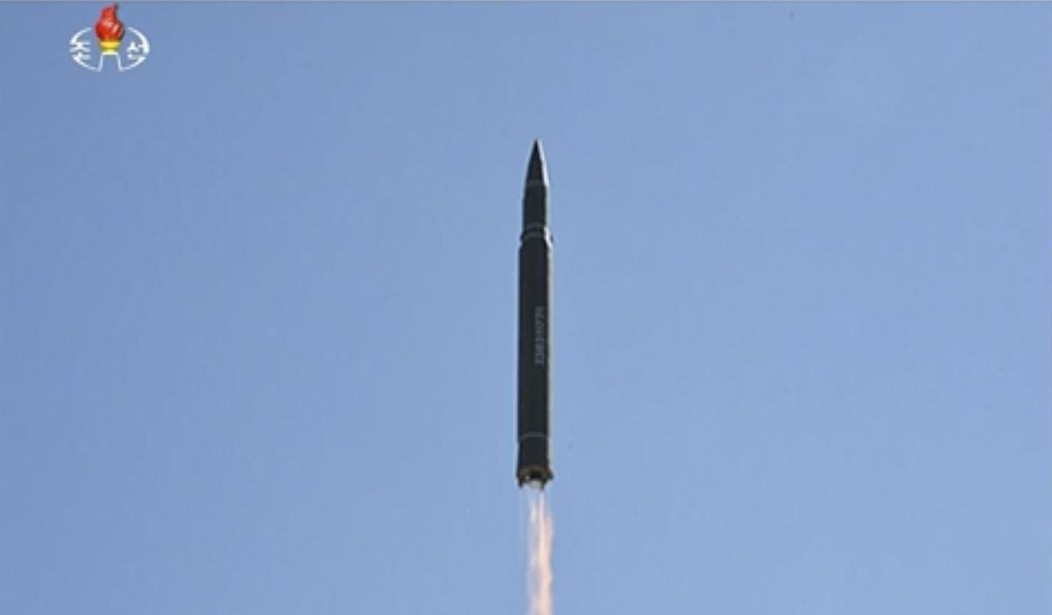North Korea successfully tested its most advanced missile to date, launching a multi-stage Hwasong-14 missile over the Sea of Japan. One expert believes the missile has a range of 4100 miles, making it capable of hitting a target in Alaska.
“It is a major celebration in our history,” said an announcer on North Korean state television. “[North Korea] is now a proud nuclear state, which possesses [an] almighty ICBM rocket that can now target anywhere in the world.”
The Hwasong-14 hit its target precisely after flying for 39 minutes, state television said.
The test — one of several this year — was detected at about 9:40 a.m. local time (8:40 p.m. ET Monday), a South Korean military official told NBC News. Seoul condemned the launch as a “reckless provocation.”
Russia and China responded to the news by proposing that North Korea declare a moratorium on nuclear and missile tests while the U.S. and South Korea refrain from large-scale military exercises. The call was issued in a joint statement after talks between President Vladimir Putin and President Xi Jinping on Tuesday.
President Donald Trump tweeted an apparent reference to North Korean leader Kim Jong Un, asking: “Does this guy have anything better to do with his life?”
Trump suggested that the launch could lead China to “put a heavy move on North Korea and end this nonsense once and for all!”
Although North Korea is barred under a U.N. resolution from firing ballistic missiles, it routinely does so, saying its arsenal is a necessary tool to defend itself from the United States. The country has conducted five nuclear weapons tests since 2006, with two last year alone.
U.S. Pacific Command in Hawaii said it detected what it assessed as an intermediate-range ballistic missile (IRBM) near North Korea’s Panghyon Airfield. The missile landed inside Japan’s maritime economic area, just outside its territorial boundary.
RBMs have a range of up to about 3,400 miles, according to the U.S. Missile Defense Agency. ICBMs, meanwhile, can travel further, although varying performance means there can be a significant overlap between the two.
Missile scientist and security expert David Wright earlier wrote in a blog update that the missile “would need to fly on a very highly lofted trajectory to have such a long flight time” and could have a possible maximum range of 4,160 miles — enough to put Alaska within range.
The timing of the launch — on the day America celebrates its independence — was no accident. Kim likes his little dramas. As a petty tyrant, Kim boosts his own ego when he imagines he is sticking it to the U.S.
But the issues raised by the launch are deadly serious. The world’s most unstable, paranoid regime will soon be capable of launching a missile carrying a nuclear warhead. It’s only a matter of time — perhaps a few years — until the Kim regime develops the technological capability to hit major American cities.
Do we wait until they actually have the capability? Or do we bend every effort to make sure North Korea’s ability to strike the U.S. never becomes a reality?
War on the Korean peninsula would be devastating. But if China won’t sit on its “friend,” who is going to stop them? North Korea is impervious to sanctions and boycotts, although China could really put the screws to them if they stopped selling food to them. That’s not going to happen, as even the U.S. allows food aid to the starving North Koreans.
Military action against North Korea will probably be Trump’s most difficult call. And he’s going to have to make it sooner rather than later.










Join the conversation as a VIP Member